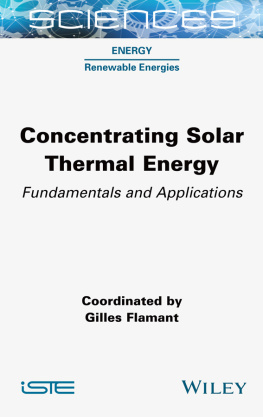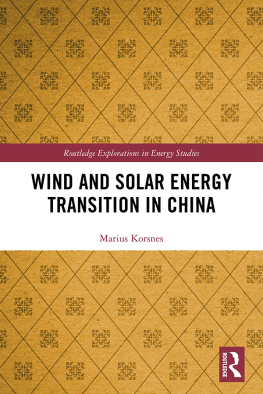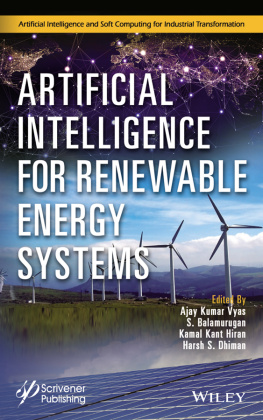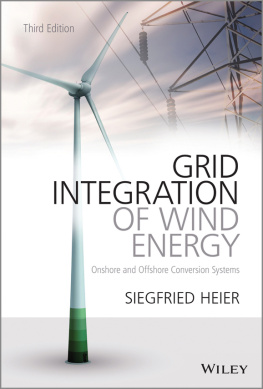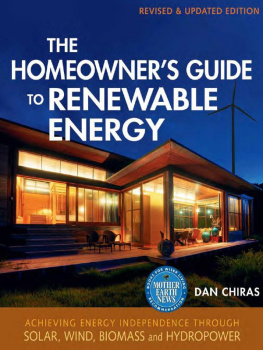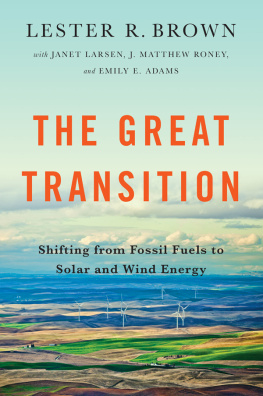1.1 What Is Energy?
Prior to discussing global energy production and consumption, it is prudent to have a look at the physics associated with energy. Although many people are familiar with the term energy , surprisingly only a few people can appreciate energys true nature. In everyday language, the word energy is used very slackly; words like work , power , fuel and energy are often used interchangeably and erroneously. Energy forms the basis of human life. There is hardly any activity that is independent of energy. In olden days man used muscle power, then fire and animal power. Later, man learnt to harness energy, convert it to useful form and put it to various uses. Over the past few decades, energy has become the backbone of technology and economic development. Not counting men, machines and money, energy is now the fourth factor of production. Without energy, no machine will run and electricity has become a necessity. Hence, the energy requirements have increased in the years following the industrial revolution. This tremendous increase in use of energy has created troubles of demand and supply. If this mounting world energy demand is to be met with fossil fuels, they will not be available for energy production in few years. It is a need of todays world to concentrate on renewable energy sources to satisfy the demand and conserve our finite natural resources for the generations to come. This is an endeavor to present an overview of the concerns about energy demand and supply ratio and how to conserve energy as well how to make best use of renewable energy.
Energy is vital in the entire process of evolution, growth and survival of all living beings. Energy plays a fundamental role in the socio-economic development and human welfare of a country. The term strategic commodity is commonly used in countries to define energy. Any ambiguity in the supply of energy would cause a pressure to the economy of the country. Such energy security is important not only to the countrys economic growth, but also for the vision of a country with reference to the activities related to human development. These activities include removal of poverty, providing employment and satisfying the Millennium Development Goals (MDGs). The issues related to the demand in energy are related to energy demand, energy poverty and environmental effects of energy growth. In this chapter, we will discuss the energy scenario, global and Indian energy crisis, energy efficiency, classification of energy sources, solar energy, wind energy, benefits of renewable energy, trends in energy consumption, worldwide potentials of renewable energy sources, and the need for new energy technologies. In addition an introduction to MATLAB and SIMULINK is provided with application of soft computing techniques in solar and wind energy generation systems.
1.1.1 The Energy Scenario
World population is expected to grow at around 1 % while GDP (Gross Domestic Product) is expected to grow around 3 %. GDP per capita can be considered a reasonable proxy for global energy demand. Demand for natural gas is expected to rise significantly, especially due to its use in power generation. Liquefied Natural Gas (LNG) becomes a significant energy carrier globally.
Fossil fuel based thermal power, hydro-electric, and nuclear constitute the conventional sources of power. Taking into consideration the profile of energy sources in India, coal has a dominant position. Coal constitutes about 51 % of Indias primary energy resources followed by Oil (36 %), Natural Gas (9 %), Nuclear (2 %) and Hydro (2 %). Non-conventional sources are less than 5 % of total installed capacity in India. The present installed capacity (as in March 2006) is about 1, 25,000 MW, consisting of coal based plants (56 %), gas based plants (10 %), hydro-electric (26 %), nuclear (3 %) non-conventional (5 %). For next few decades, India would need to exploit all possible options to create reasonably large capacity base on the energy side. It needs to increase the coal generation, extract oil and gas reserves through all conceivable means wherever possible. It ought to additionally depend on import of coal, procure coal and gas reserves abroad and exploit completely the huge hydro electric potential which is over 1,50,000 MW. So far about 32,000 MW i.e. 20 % of the hydroelectric potential has been exploited. An increase in the capacity of power generation based on the coal reserves of the nation, which are of the order of 200 billion tones is inexorable. Atomic projects have ended up being successful and effective. Atomic power plants are one of the essential choices that India is seeking since mid-1980s and early 1990s. India has immense gas holds, both on the Western, and all the more especially, around the Eastern coast. In addition, various LNG terminals have likewise been created and are, no doubt created with the goal that the utilization of gas could be supplemented through import of Liquefied Natural Gas. India is one of the minority countries which has been successful in employing wind turbine technology and today of the total capacity of 1,25,000 MW in the country about 5 % is constituted by the various non-conventional sources of generation, wind being the largest contributor.
India has the least per capita energy consumption among other countries in the world. The consumption of energy by India is 540 kgoe in 2008, whereas 1,803 kgoe is consumed by the world, 4,560 kgoe by OECD nations, and 1,600 kgoe by China. Indias energy use productivity for creating Gross Domestic Product in Purchasing Power Parity is superior to numerous nations and even contrasted with the world normal. It is normal that with a development rate of 9 %, TPES necessity for India in 20212022 will be around 1,192 mtoe which will further expand to around 2,043 mtoe by the year 20312032. The power utilization per capita for India is only 566 Kwh and is far below most nations on the earth. Despite the fact that 85 % of towns are supplied with electricity, around 57 % of the domestic units in the country and 12 % of urban families, i.e. 84 million family units in the nation, dont have accessibility to electric power. Power utilization in India is required to ascent to around 2,280 Bkwh by 20212022 and around 4,500 Bkwh by 20312032. The Human Development Index (HDI) is figured from the literacy rate, infant mortality rate and GDP plotted against per capita power utilization. It is observed that for consumption over 4,000 kWh/per person the curve plateaus out and straightens. Power capacity has risen at a rate of 5.87 % per annum over the last 25 years. The aggregate supply of power has climbed at the rate of 7.2 % for every annum over the same period. This reflects a change in Plant Load Factor (PLF). In any case, the utilization is still compelled as force deficiencies proceed with torment to the nation. Availability Based Tariffs (ABT) and unscheduled exchange charges of force presented since 2003 for interstate offer of power has narrowed down the fluctuations in voltage and frequency. The deficiencies are additionally ascribed to insufficient ventures in distribution and transmission. Expanding the generation capacity has attracted wide range of investment. Aggregate Technical and Commercial (AT&C) misfortunes which incorporate theft of electricity, non billing, wrong billing, inefficient transmission and distribution losses surpassed 40 % for the nation in general in 2005. Hence, the State Electricity Boards remain monetarily sick and are unable to draw in accounts for venture. The degree of power deficiency differs from state to state.



